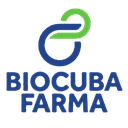Executive Secretary

9th International Scientific Conference on Agricultural Development and Sustainability
10th Symposium of Veterinary Medicine and Zootechnics
Abstract
In the present work was investigated using a 2 × 2 factorial design trial that tested both supplementations of L. leucocephala in the late pregnancy diet of goat does, and supplementation of live yeast to their newborns. Ten pregnant goats were divided into two groups: the D+ and D– groups, which either received or did not receive 30 g of L. leucocephala forage meal during the last 7 ± 0.5 weeks of gestation. Twins from each goat were divided into the K+ and K– group (supplemented with or without 0.2 g/d of live yeast from day 3 until weaning at 8 weeks). We found a stimulatory effect of prenatal exposure on the post-weaning dry matter intake of the L. leucocephala-supplemented diet, resulting in a higher daily gain and final body weight at 20 weeks in the D+ vs. D– group. Moreover, Ruminococcus represented a greater proportion of the rumen bacterial community of the D+ vs. D– kids. Differences in the immune status were relatively small and not thought to be a driving factor of differences in animal performance. Furthermore, postnatal supplementation of live yeast favored maturation of the rumen bacterial community (i.e., a greater abundance of Bacteroidetes, in particular Prevotella, and reduced abundance of Firmicutes) and protozoa colonization. Concomitantly, OMD was enhanced post-weaning, suggesting the effects of the early-life intervention persisted and could have affected animal performance.
Resumen
En el presente trabajo se investigó mediante un ensayo de diseño factorial 2 × 2 que probó tanto la suplementación de L. leucocephala en la dieta de cabras al final del embarazo como la suplementación de levadura viva a sus recién nacidos. Diez cabras preñadas se dividieron en dos grupos: los grupos D+ y D–, que recibieron o no 30 g de harina de forraje de L. leucocephala durante las últimas 7 ± 0,5 semanas de gestación. Los mellizos de cada cabra se dividieron en grupos K+ y K– (suplementados con o sin 0,2 g/d de levadura viva desde el día 3 hasta el destete a las 8 semanas). Encontramos un efecto estimulador de la exposición prenatal en la ingesta de materia seca después del destete de la dieta suplementada con L. leucocephala, lo que resultó en una mayor ganancia diaria y peso corporal final a las 20 semanas en el grupo D+ vs. D–. Además, Ruminococcus representó una mayor proporción de la comunidad bacteriana ruminal de los cabritos D+ vs. D–. Además, la suplementación posnatal de levadura viva favoreció la maduración de la comunidad bacteriana del rumen (es decir, mayor abundancia de Bacteroidetes, en particular Prevotella, y menor abundancia de Firmicutes) y la colonización de protozoos. Al mismo tiempo, la OMD mejoró después del destete, lo que sugiere que los efectos de la intervención temprana persistieron y podrían haber afectado el rendimiento del animal.
About The Speaker

Einar Artiles Ortega

Discussion

